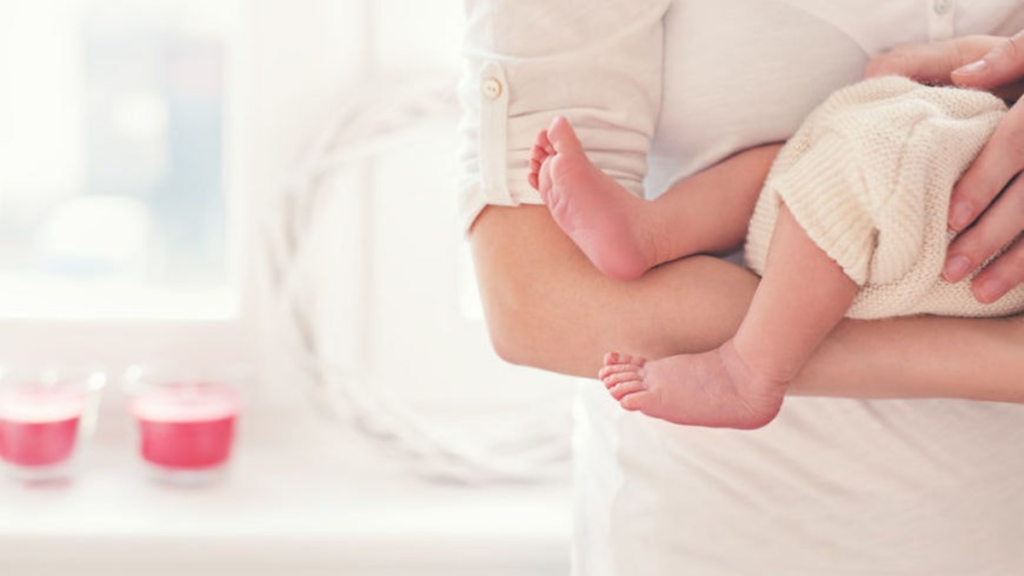
Your body has changed and adapted throughout your pregnancy and that journey will continue into the postpartum period. The postpartum period, begins immediately after delivery and lasts for 3 months following delivery. Postpartum changes are different for every new mom, but here are some common postpartum issues to watch out for.
After your baby is born your body starts the process of involution, the uterus shrinks back to its pre-pregnant size. When your baby was still inside, your uterus would stretch to accommodate the growing baby. Once baby is born, then the uterus needs to shrink down in size. Your uterus will shrink down everyday and by 10 days postpartum it will be back down low enough that it cannot be felt.
In order for the uterus to shrink in size, it needs to contact. You will notice contraction like cramping (afterpains) after your baby is born. This is just your bodies way of getting the uterus to contract to shrink and keep the bleeding controlled. Breastfeeding moms will notice this even more because as they breastfeed the hormone oxytocin is released which causes the letdown of milk and also contracts the uterus. The cramping feels uncomfortable, but it is a good thing! It is your bodies natural way of taking care of things. The afterpains will usually settle days 3-5 postpartum.
Postpartum hemorrhages are rare but are one of the more common postpartum complications. Postpartum hemorrhages are an increase in vaginal bleeding that becomes very heavy soaking 1 or more pads an hour and/or passing clots the size of or bigger than a golf ball. These hemorrhages often occur immediately after delivery, but can occur up to a month postpartum. If you are at home and these changes are happening to the bleeding, then you would want to seek medical help.
Vaginal bleeding can continue for 4-6 weeks normally. It will be the heaviest and brightest red in the first few hours and first few days. The first week may be heavier than you are used to but after that, it usually normalizes and slows, tapering off and looking like more old (darker coloured) blood as we get closer to the end of the 4-6 weeks.
New moms may notice an increase in vaginal bleeding on days where they have done an increase in activity. This is our body’s warning to slow down a little and rest.
For women who have delivered vaginally, pain in the area between the rectum and vagina (perineum) is very common. The area is sore, sometimes bruised, and swollen from delivery. There could also be tears that have been repaired with stitches. As your body heals, the discomfort decreases. In the meantime, you could try a sitz bath, perineal ice pack, sitting on a pillow, Tylenol, and Naproxen to help with the discomfort. Stool softeners are often recommended to avoid straining during a bowel movement.
After delivery mom is introduced to a plastic squirt bottle. Mom’s will be instructed to fill the bottle with warm water to rinse the perineal area after using the washroom to reduce tenderness and to prevent infection.
Postpartum moms who are breastfeeding should also look out for signs of a breast infection. In prenatal classes, I always get asked what is your best tip for breastfeeding and my answer is always to be picky about the latch. Make sure you wait until your baby opens their mouth nice and wide when bringing them into the breast and make sure they get a nice deep latch, lots of breast tissue in their mouth. Not only does this give the breast the proper stimulation to make an adequate milk supply but it also helps reduce the risk for nipple damage. If the nipples get cracked and blistered then that is the entryway for different things like bacteria. Mastitis is a breast infection that usually starts as a tender, reddened area on the breast that can come with or without a fever. Mastitis does not affect the breastmilk; therefore, you can feed your baby through the infection. Mastitis will require the mom to seek help from their healthcare provider to treat. Applying warmth can help, as well as rest and keeping the breast empty.
Moms can develop a fever postpartum for different reasons than a breast infection. Other infections that can happen after delivery are bladder infections, infections in the uterus, or a wound infection if you had a cesarean section. If you develop a fever postpartum always seek help from your health care provider.
Having a baby is an incredible feeling but the huge hormonal shifts can have a big impact not only on your body but also on your emotions. Many women experience baby blues after the birth of their baby because of the shift in hormone levels, stress, and sleep deprivation. Being a new parent can come with anxious feelings as all the changes and your new role can feel overwhelming. For most, the blues go away by the end of the second week postpartum but for some, they can persist and develop into postpartum depression. Moms should be encouraged to share these feelings with friends and family, look for support and take help with the baby. If these feelings are impacting your relationship with your baby or your partner, seek help from your health care provider.
© 2023 All rights reserved Baby & Toddler - part of parent promotions